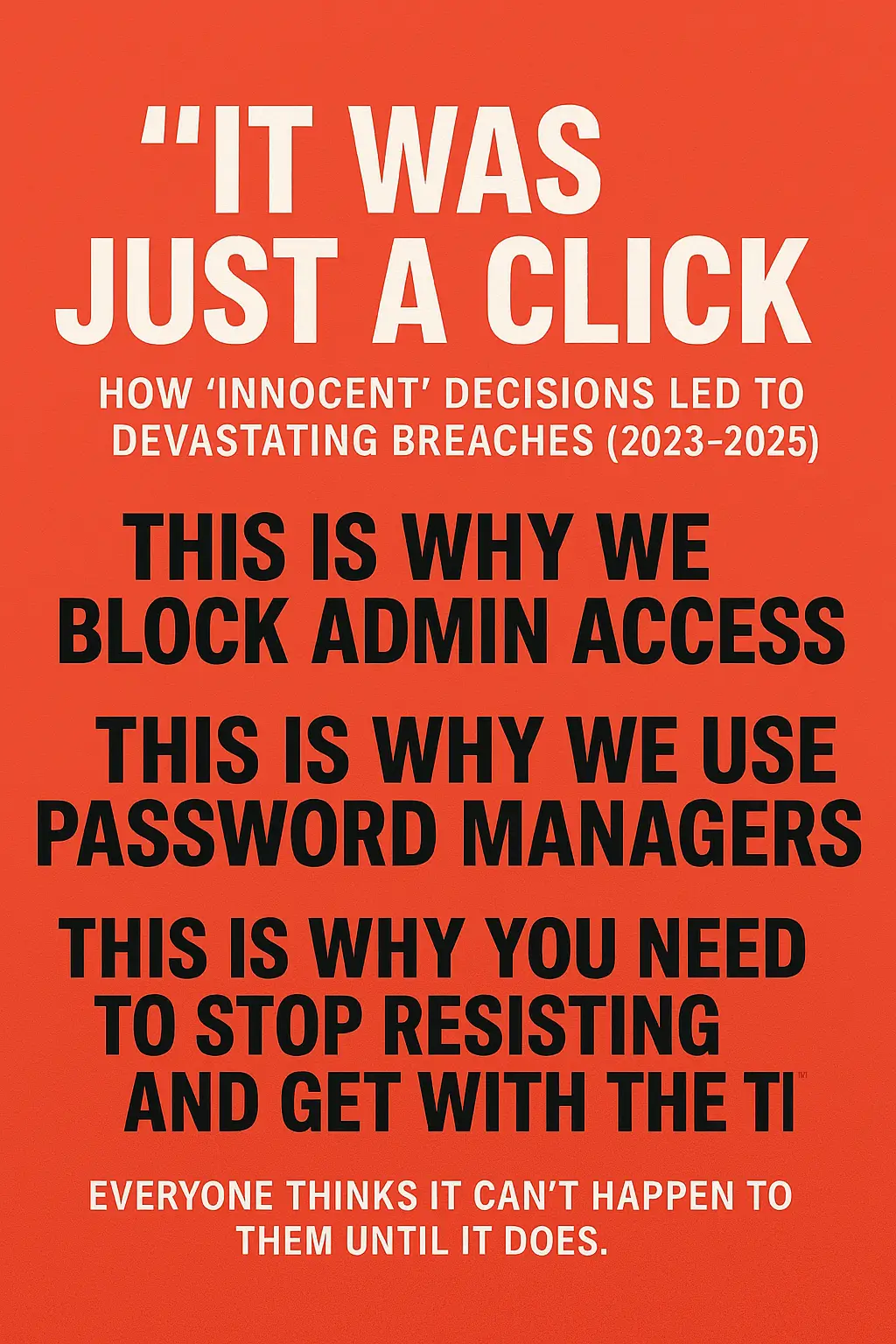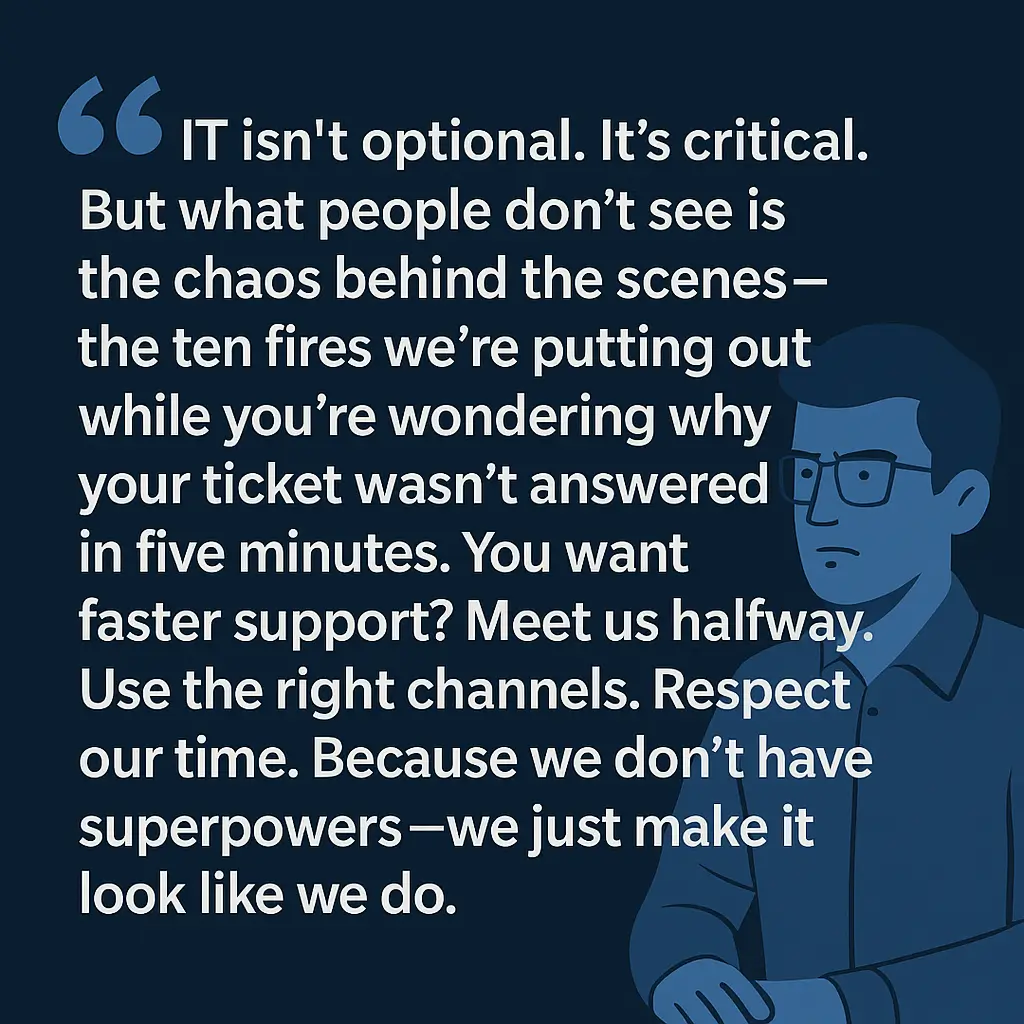A comprehensive disaster recovery plan is essential for every business in today’s unpredictable world. Disasters don’t wait for you to be prepared. Whether it’s a ransomware attack, hardware failure, natural disaster, or human error, the question isn’t if your business will face a disruption—it’s when. While creating a comprehensive disaster recovery plan typically takes days or weeks, we’ll show you how to create a basic framework in just 5 minutes that you can build upon over time.
Why Every Business Needs a Disaster Recovery Plan
The statistics are sobering:
- 60% of small businesses that lose their data shut down within 6 months
- The average cost of downtime is $5,600 per minute
- 93% of companies without disaster recovery who suffer a major data disaster are out of business within one year
A disaster recovery plan isn’t just an IT concern—it’s a business survival strategy. Let’s create your emergency 5-minute plan to get you started.
Your 5-Minute Disaster Recovery Plan Framework

Minute 1: Identify Your Critical Assets
Take 60 seconds to list the essential systems, applications, and data your business absolutely cannot function without. These are your “crown jewels” that need priority protection in your disaster recovery plan.
Quick Checklist:
- Customer databases
- Financial records and payment systems
- Email and communication systems
- Operational software
- Product/service delivery systems
- Proprietary information
Pro Tip: Don’t overthink this initial step of your disaster recovery plan. Focus on what would immediately halt your ability to serve customers or generate revenue if lost.
Minute 2: Determine Your Recovery Objectives
For each critical asset in your disaster recovery plan, decide:
Recovery Time Objective (RTO): How quickly must this system be restored? Recovery Point Objective (RPO): How much data loss can you tolerate?
Minute 3: Outline Basic Backup Procedures
Sketch a simple backup strategy for your critical systems as part of your disaster recovery plan:
- 3-2-1 Backup Rule:
-
- 3 copies of your data
- 2 different types of media
- 1 copy stored offsite or in the cloud
- Automated Solutions:
-
- Cloud backup services
- Onsite backup appliances
- Hybrid backup solutions
- Verification Process:
-
- Daily backup success/failure alerts
- Weekly random file restoration tests
- Monthly backup system reviews
Minute 4: Define Emergency Response Roles
Who does what during a disaster? Assign these key roles in your disaster recovery plan:
- Disaster Coordinator: Overall leadership during recovery
- IT Recovery Lead: Manages technical recovery operations
- Communications Lead: Handles stakeholder communications
- Business Continuity Lead: Manages temporary operations
- External Support Contact: Coordinates with vendors/partners
Include each person’s name, contact information, and backup person.
Minute 5: Create Your Emergency Communication Plan
Document how you’ll communicate during a crisis:
Internal Communications:
- Primary method: ________________
- Backup method: ________________
- Emergency contact list: ________________
External Communications:
- Customer notification process: ________________
- Vendor notification process: ________________
- Public relations statement template: ________________
Building Upon Your 5-Minute Disaster Recovery Plan
Your 5-minute disaster recovery plan gives you a critical starting point, but a robust strategy requires further development. Here’s how to enhance your basic framework:
Comprehensive Risk Assessment
Identify specific threats most likely to impact your business:
Common risks to consider in your disaster recovery plan:
- Ransomware and cyberattacks
- Hardware/system failures
- Power outages
- Natural disasters
- Human error
- Supply chain disruptions
- Pandemic or public health emergencies
Detailed Recovery Procedures
For each critical system in your disaster recovery plan, document:
- Backup restoration procedures
-
- Step-by-step technical instructions
- Required credentials and access methods
- Verification processes
- Alternative operation methods
-
- Manual workarounds
- Temporary system substitutions
- Reduced functionality protocols
- Vendor support information
-
- Support contract numbers
- Escalation contacts
- Service level agreements
Testing Your Disaster Recovery Plan
Even a simple disaster recovery plan requires testing to ensure it works when needed:
Tabletop Exercises: Gather key personnel and walk through disaster scenarios verbally.
Functional Tests: Restore systems in an isolated environment to verify procedures.
Full-Scale Simulations: Periodically conduct a complete disaster recovery drill.
“A disaster recovery plan is only as good as its last successful test.”
Continuous Improvement Cycle
Your disaster recovery plan should evolve with your business:
- Quarterly Review: Update contact information and system inventory
- Bi-Annual Testing: Validate recovery procedures through testing
- Annual Overhaul: Comprehensively reassess risks and strategies
Industry-Specific Disaster Recovery Plan Considerations
Healthcare Organizations
Healthcare providers face unique challenges with HIPAA compliance and patient care continuity:
- Protected Health Information (PHI) requires encryption in backups
- Recovery priorities must include patient-critical systems
- Compliance documentation must be maintained during recovery
Financial Services
Financial institutions must address regulatory requirements and transaction integrity in their disaster recovery plan:
- Transaction reconciliation procedures during recovery
- Customer data protection protocols
- Regulatory reporting requirements following incidents
Professional Services
Law firms, accounting practices, and consulting firms should focus on:
- Client confidentiality during recovery operations
- Document management and preservation
- Maintaining client service levels during disruptions
Cloud-Based Disaster Recovery Solutions
Modern disaster recovery plans often leverage cloud technologies:
Disaster Recovery as a Service (DRaaS) provides rapid recovery capabilities without massive infrastructure investments. Benefits include:
- Reduced capital expenditure
- Scalable protection
- Geographic redundancy
- Simplified testing capabilities
- Expert management
Small businesses particularly benefit from cloud-based backup and disaster recovery solutions that offer enterprise-grade protection at affordable price points.
Common Disaster Recovery Plan Mistakes to Avoid
- Focusing only on data backup Recovery requires more than just restoring data—applications, configurations, and dependencies matter too.
- Neglecting physical disasters While cyber threats dominate headlines, physical disasters like fires, floods, and equipment failures remain common.
- Forgetting about people Your disaster recovery plan must account for staff availability and safety during disasters.
- Overlooking communications Failure to communicate effectively during a crisis can damage customer and employee relationships.
- Never testing the plan Untested disaster recovery plans often fail when needed most due to overlooked dependencies or procedural errors.
Building Long-Term Resilience
A truly resilient business moves beyond disaster recovery to business continuity:
Disaster Recovery: Focuses on restoring IT systems and data after a disruption. Business Continuity: Ensures the entire business can continue functioning during disruptions.
Consider these long-term resilience strategies in your disaster recovery plan:
- Redundant infrastructure for critical systems
- Geographic distribution of operations
- Cross-training staff on essential functions
- Alternative supplier relationships
- Regular scenario planning exercises
When to Seek Professional Disaster Recovery Plan Assistance
Some situations warrant professional disaster recovery expertise:
- Complex IT environments with many interdependencies
- Regulated industries with compliance requirements
- Businesses with limited IT staff
- Organizations with zero tolerance for downtime
- Companies that have previously experienced recovery failures
At US Tech Support Solutions, our experienced team helps businesses implement proactive disaster recovery solutions that protect critical assets while minimizing recovery time. Our AI-driven tools can detect threats before they cause significant damage, potentially preventing disasters altogether.
Conclusion: From 5 Minutes to Full Protection
Your 5-minute disaster recovery plan is an excellent starting point, but true resilience comes from ongoing refinement and testing. Remember:
- Start with critical systems and clear responsibilities
- Document your processes and communication plans
- Test regularly and update continuously
- Consider professional support for complete protection
Don’t wait until disaster strikes. Take 5 minutes today to create your basic disaster recovery plan, then schedule time to develop it further. Your business’s survival may depend on it.
Need help building a more comprehensive disaster recovery strategy? Contact our team for a free consultation on protecting your business from unexpected disruptions.








